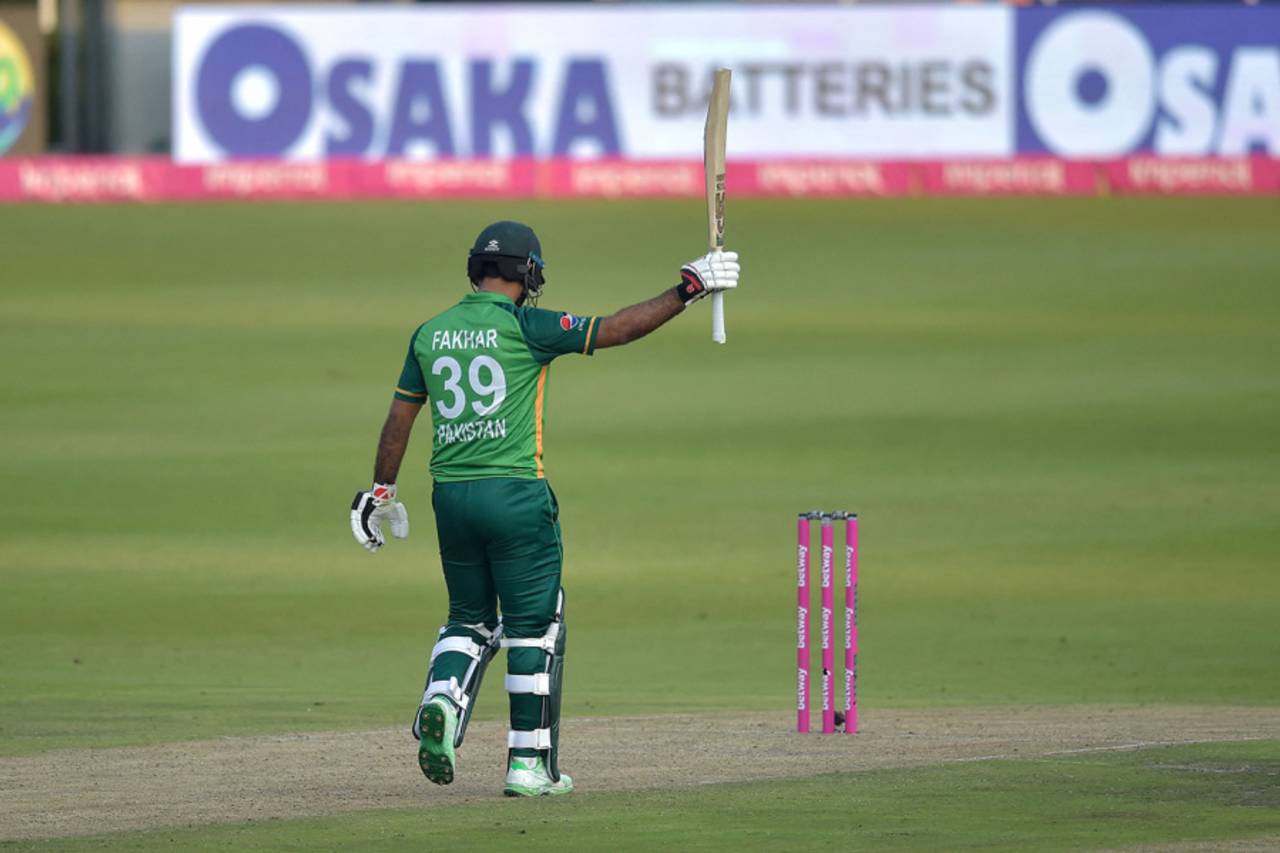Was Glenn Maxwell the first to score a double-century in an ODI chase?
And was Quinton De Kock's six catches against Afghanistan a record?

Glenn Maxwell beat out Fakhar Zaman's 193 against South Africa, the previous highest score in an ODI chase • Getty Images
That astonishing onslaught by Glenn Maxwell last week, for Australia vs Afghanistan in Mumbai, brought him the 11th double-century in one-day internationals - but the first in a chase, as the other ten were all scored by openers in the first innings of the match.
The difference of 177 between Glenn Maxwell's score and the next highest in Mumbai has been exceeded only twice in any ODI innings: 198 between Rohit Sharma (264) and Virat Kohli (66) for India against Sri Lanka in Kolkata in November 2014, and 195 between Martin Guptill (237*) and Ross Taylor (42) for New Zealand against West Indies in Wellington in March 2015, which remains the World Cup record.
The South African wicketkeeper Quinton de Kock's six catches in an innings in the match against Afghanistan in Ahmedabad last week equalled the World Cup record, set by Adam Gilchrist for Australia against Namibia in Potchefstroom in February 2003, and matched by Sarfaraz Ahmed for Pakistan against South Africa in Auckland in March 2015.

The four run-outs in the Netherlands' innings against Afghanistan in Lucknow was the 61st instance of four in all ODIs, and the 12th in the World Cup. There have also been ten innings which included five run-outs, two of them in the World Cup: both of those were by Australia, in the inaugural final against West Indies at Lord's in 1975, and against India in Mumbai in 1996.
You're right that the Indian fast bowler Mohammed Shami deserves an honourable mention here. After the group phase of the current World Cup he had taken 187 wickets in 99 one-day internationals, so sits alongside Shaheen Shah Afridi (104 from 53), Trent Boult (210 from 113) and Mitchell Starc (230 from 119) in the ranks of those currently nudging two per game.
Steven Lynch is the editor of the updated edition of Wisden on the Ashes